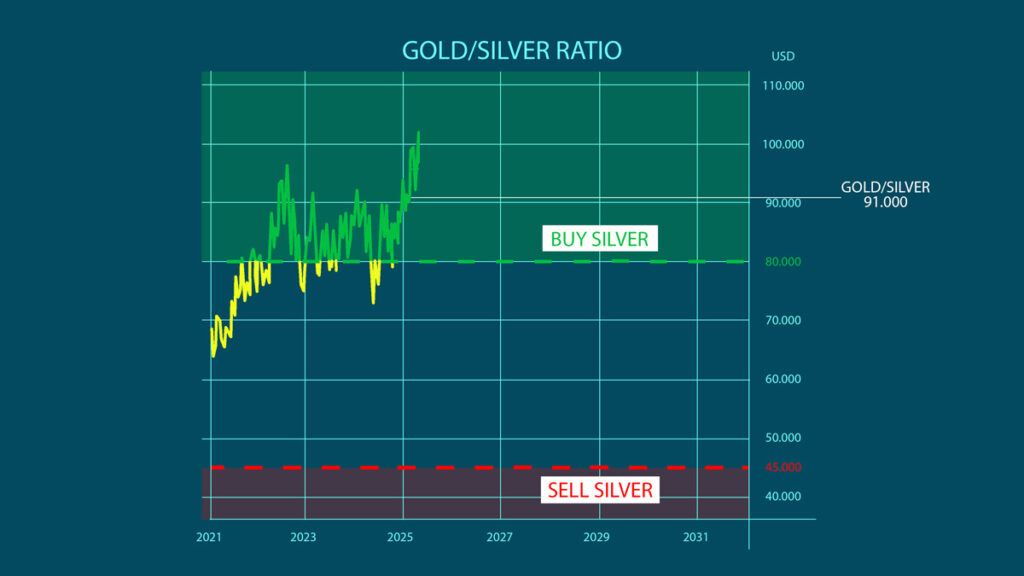 The gold-to-silver ratio has steadily risen since late 2024, with a dramatic upswing beginning in late March and into April. This widely followed metric, which indicates how many ounces of silver are required to buy one ounce of gold, recently surpassed 100:1, marking only the fourth time in history it has reached this level. The last time the gap in relative value between gold and silver was this wide was in 2020.
The gold-to-silver ratio has steadily risen since late 2024, with a dramatic upswing beginning in late March and into April. This widely followed metric, which indicates how many ounces of silver are required to buy one ounce of gold, recently surpassed 100:1, marking only the fourth time in history it has reached this level. The last time the gap in relative value between gold and silver was this wide was in 2020.
While many analysts argue that such extreme ratios suggest silver is undervalued relative to gold, it’s important to understand the factors driving this imbalance. A closer look at the variable underpinning a high gold-to-silver ratio can offer valuable insight into how these two key precious metals are performing—and what that might mean for investors.
Gold’s Preeminence
Gold remains the most popular and widely traded precious metal. It’s become the go-to safe-haven asset for retail, institutional, and national investors, with a long track record of keeping pace with inflation. When markets turn south, people tend to flock to the yellow metal.
The current climate of uncertainty is a core driver of gold’s record-setting rally. The combination of gold’s preeminence and an increasingly fraught economic landscape has widened the distance between the yellow and gray metal.
👉 Related Read: Do Precious Metals Protect Against Inflation?
Central Bank Demand
Even before the gold standard, countries preferred gold over silver. It remains one of the world’s most widely held reserve assets. Over the past three years, central banks have even ramped up their annual consumption, reaching over 1,000 tons.
Many experts attribute the recent surge in gold prices to this unprecedented rise in governmental demand. Although silver benefits vicariously from this significant interest, it has yet to achieve the same widespread national adoption.
👉 Related Read: The Gold Standard: Everything You Need to Know
Silver’s Dual Role
Gold is primarily sought out as an investment metal. On the flip side, silver has a dual role as an investment and industrial metal. This bifurcated demand makes the shiny metal more susceptible to market downturns.
Industrial usage accounts for roughly 60% of global silver purchases. With sticky inflation, falling consumer spending, and a bleak GDP outlook, this source of demand could take a significant hit. This weighs heavily on silver prices while the same factors fuel gold’s rally.
Market Manipulation
For decades, investors have speculated that major financial institutions intentionally suppress silver prices, often at the expense of retail investors. In 2023, this long-standing concern gained traction when two J.P. Morgan precious metals traders were convicted of price manipulation.
As the argument goes, gold has managed to break free from years of price manipulation, while silver remains stuck under similar intervention. Supporters claim that if this artificial ceiling were removed, silver could finally reach its “true” value.
Interest Rates & Inflation
Elevated interest rates tend to put more pressure on silver, partially due to gold’s popularity. When yielding assets offer higher returns, people often flock away from precious metals. The smaller silver market feels the impact more, resulting in a price slump.
The Federal Reserve had intended to cut rates at a steeper pace, but sticky inflation and a volatile market are forcing a pause. With interest rates stuck at moderate levels, silver simply doesn’t have the same appeal as gold.


